CINCINNATI — When crews blew up the main smokestack at the retired William C. Beckjord coal plant near New Richmond nearly three weeks ago, the debris was supposed to fall on land.
But some of that smokestack crashed into the Ohio River, which is the main water source for 5 million people. This left nearby residents with questions about what materials were contained inside the stack and when the debris would be cleaned up.
“My first thought was, ‘Why did that happen?’ And my second was, ‘Who allowed it to happen?’” said Dr. Janet Everhard, who has lived in New Richmond for 17 years.
“I’m concerned about not only the habitat loss in the river, the drinking water of the communities down river, but what’s happening right now,” Everhard said.
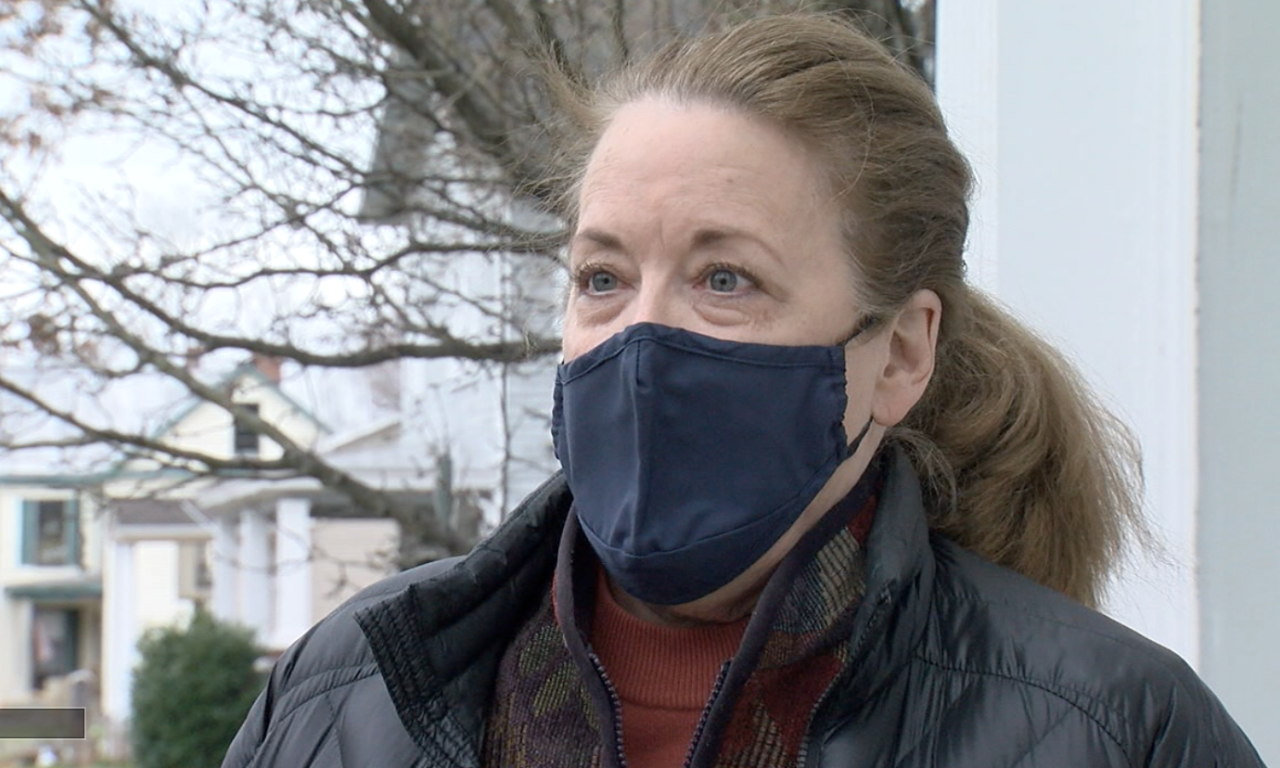
Some say what happened during that demolition on Feb. 26 highlights a bigger problem about lack of oversight at the now-dormant plant. But the site’s owner, Commercial Liability Partners, says its contractor took “extraordinary precautions” and followed all necessary guidelines in taking down the largest and last remaining stack.
Built in the 1950s as a coal-burning behemoth, the plant pumped electricity to hundreds of thousands of homes and businesses across Southwest Ohio for decades.
In 2014, Duke Energy closed the Beckjord power plant, where more than 5 million tons of coal ash were buried in unlined, man-made ponds along the Ohio River.
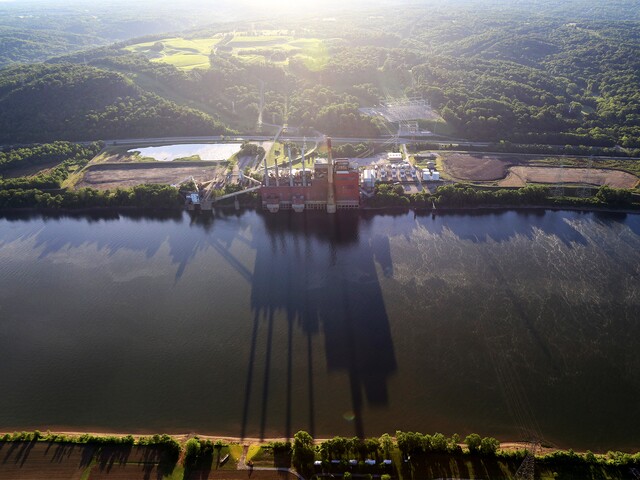
Duke sold the 1,443-acre site in 2018 to Commercial Liability Partners, which plans to demolish the plant and build an industrial park, green space and port terminal.
In a permit application to the U.S. Army Corps of Engineers, CLP’s demolition contractor, MCM Management Corp., assured the agency that no debris would enter the Ohio River.
An October 2019 application letter from MCM vice president of demolition operations Aaron Fitch stated that a barge with a 15-foot-high backstop would be used to contain any falling debris, and that demolition would take place in the summer or fall, when the Ohio River is at a low stage.
Neither of those things happened.
In emailed responses to questions from WCPO, a Corps spokesman wrote that the contractor later determined that using a barge “would not be feasible,” and it is “not a required permit condition” to demolish the smokestack during low river stage.
"The U.S. Army Corps of Engineers is working with the Ohio EPA, the U.S. EPA and the contractor to correct permit non-compliances by the contractor. The USACE requires the contractor to send continuous updates and documentation including updated photographs and documentation of the status and progress of the removal of debris from the Ohio River," a Corps spokesman wrote to WCPO.
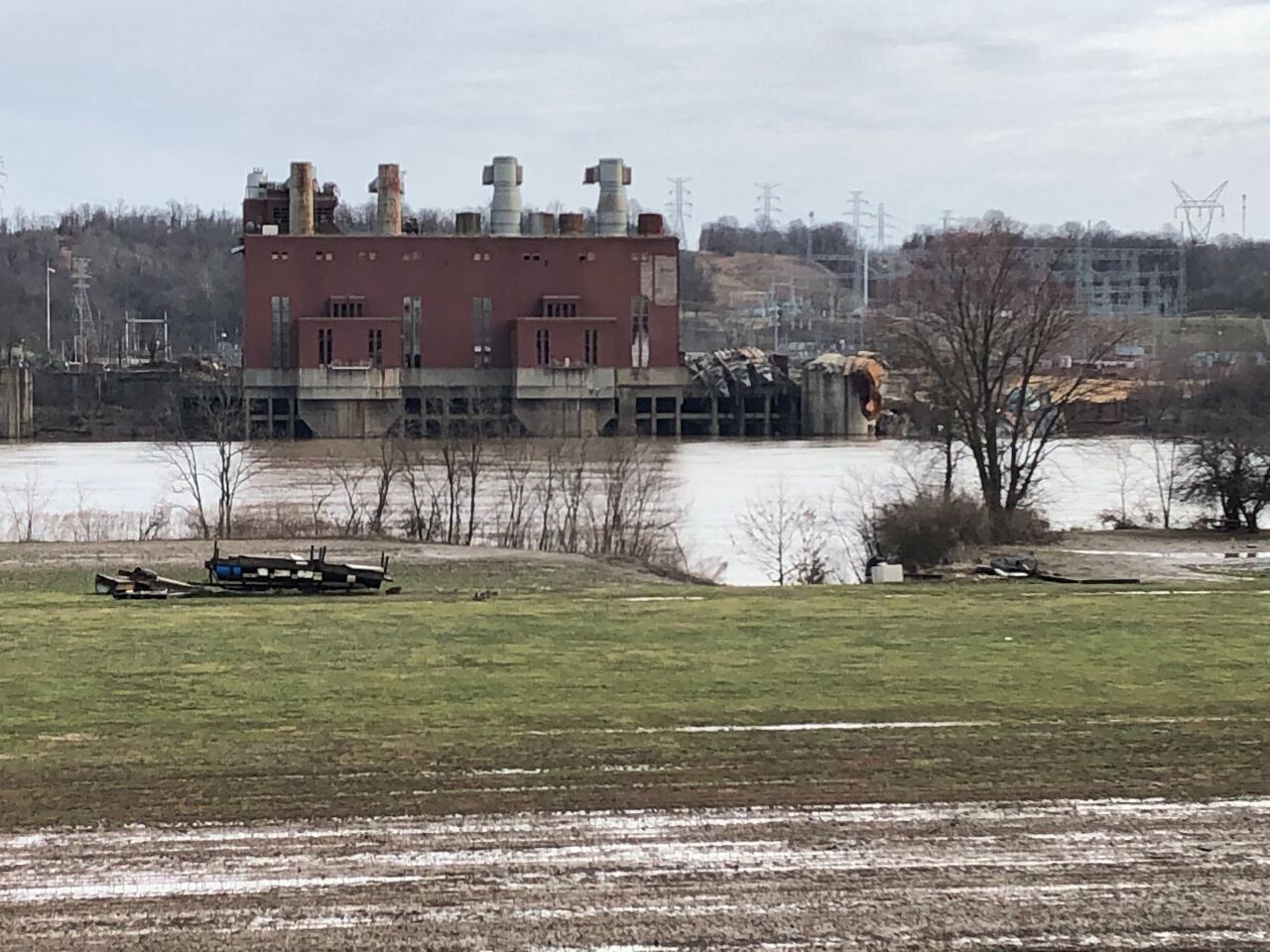
“There has been just benign neglect,” said environmental attorney Dave Altman. “The public is who you should be protecting. You should not be protecting somebody who drops their stack in the river."
Commercial Liability Partners, which owns the former Beckjord site, did not respond to requests for an interview.
But CLP did provide a statement that said, in part: “Our contractor at the Beckjord site took extraordinary precautions and worked closely with all of the appropriate officials … to ensure the demolition of the remaining stack was carried out in a way that followed all necessary guidelines.”
But Brian Williams, chair of the Miami Chapter of the Ohio Sierra Club, isn’t sure that all permit rules were followed.
“If the smokestack, or any part of the smokestack, is going into the river, that is clear violation,” Williams said.
Neither the Army Corps of Engineers, the Ohio EPA nor Southwest Ohio Air Quality Agency, which monitors dust, were on site for the Feb. 26 smokestack demolition.
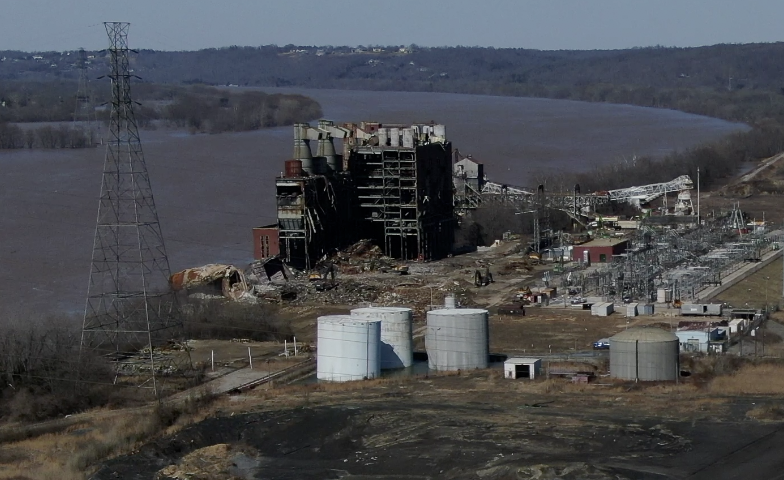
And no one from any of those agencies has been to the site since the demolition, according to agency spokespersons that WCPO contacted this week.
When WCPO last saw the demolition site on March 12, as viewed from across the river in Kentucky, gnarled metal and large chunks of debris hung over the riverfront and were partially submerged in the Ohio River.
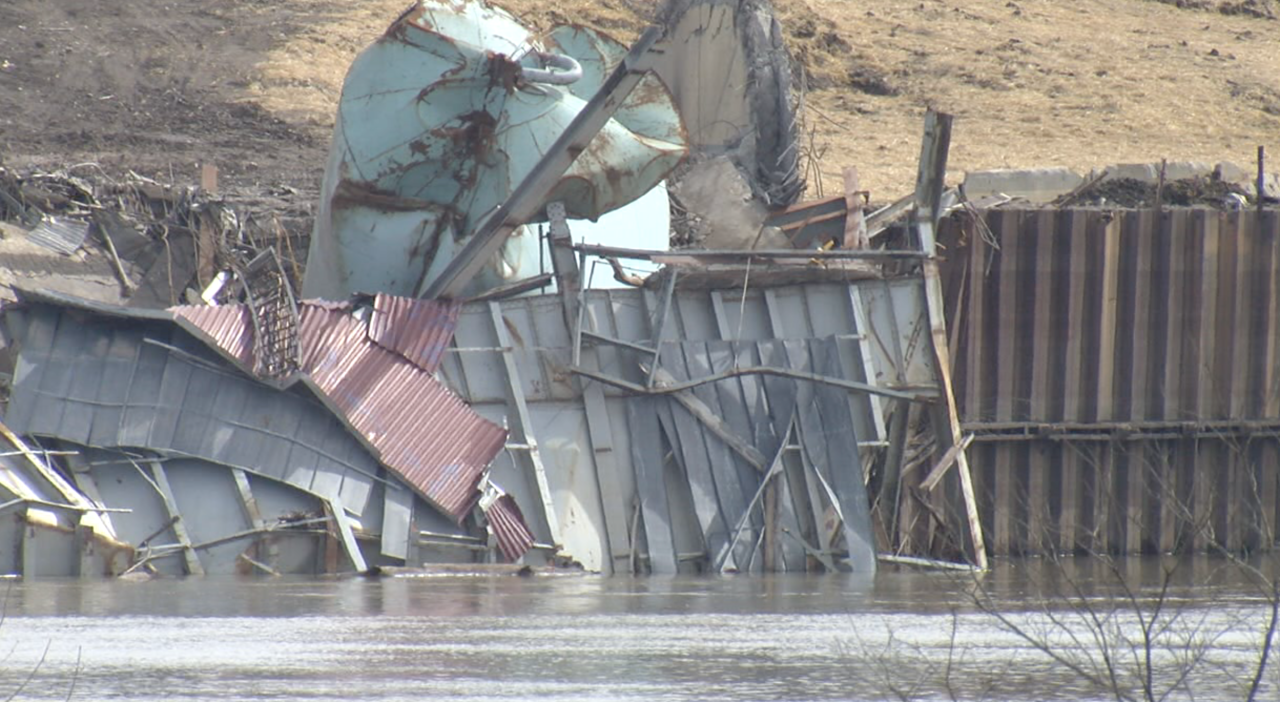
A Corps spokesman said the demolition contractor hired a firm to use SONAR to locate smokestack debris in the river and confirmed that the agency will make a site visit during the cleanup.
“You can’t escape from the fact that it isn’t regulated,” Altman said. “The public ought to be very concerned about that.”
Altman represents more than 100 New Richmond residents in a federal lawsuit filed in December 2019 against CLP. It argues that the developer breached a 1986 agreement with then Beckjord owner, Cincinnati Gas and Electric, that allegedly entitles residents to more information about contaminated waste disposal.
“There should have been preliminary warnings that were simple, like if you live in this area, even though we don’t expect for dust to go there, keep your windows closed (during demolition,)” Altman said.

In an email obtained by WCPO through a public records request, Aaron Fitch, vice president of demolition operations at MCM, described the smokestack demolition to regulators hours after it happened.
“Approximately 30 to 40 feet of the stack did fall riverside. Dust did not seem to travel a great distance and was very minimal for this type of event. We will check the air monitors and I will share that information when I get it,” Fitch wrote in an email to the Southwest Ohio Air Quality Agency.
Nearly three weeks later, a spokesperson for the air agency said it had not received any information about the demolition dust or the air monitors.
“When a stack has material in it that is likely to be mercury and heavy metals like lead,” Altman said, “that blowing around in the dust is something you ought to be concerned about.”
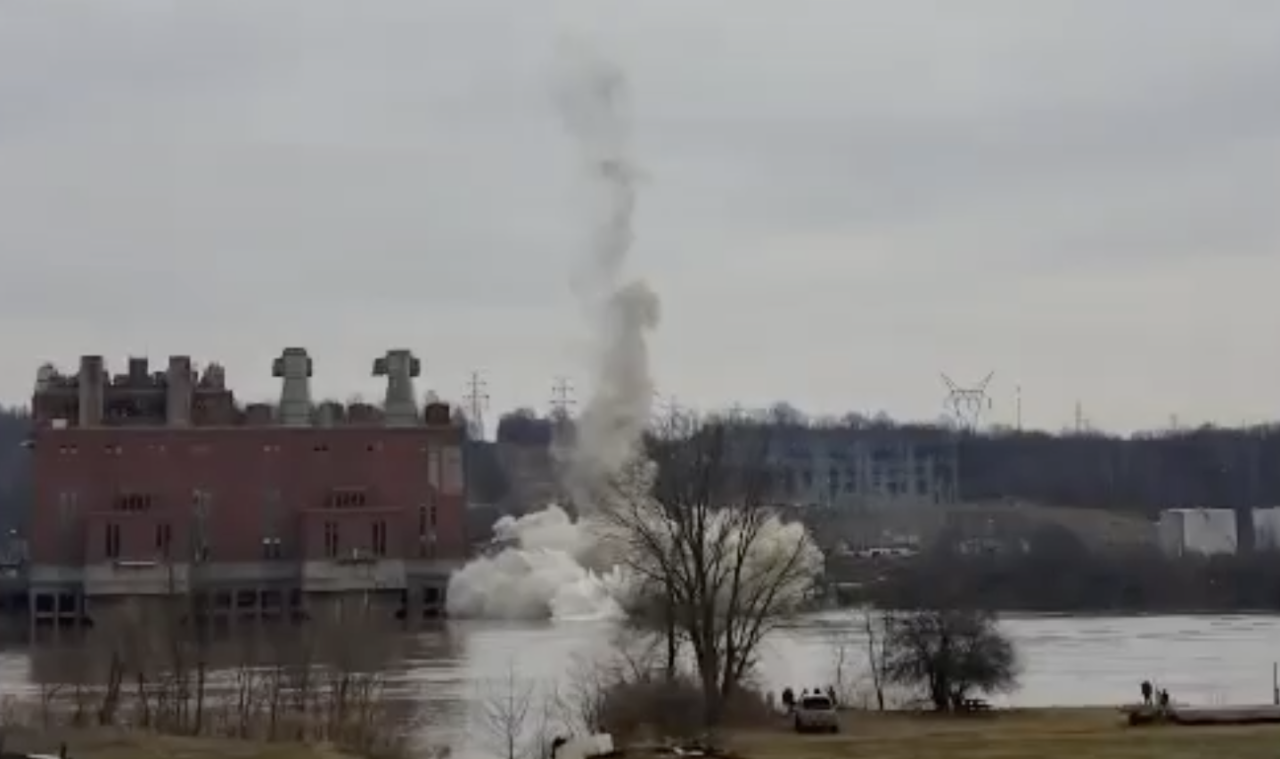
Ohio regulations require that asbestos be removed from structures before demolition, and that did happen at Beckjord.
“The brick and masonry debris which will be generated by the demo process has been tested for asbestos and has been deemed to be non-hazardous/inert. We are enclosing the results of this testing for your review and assurance,” Fitch wrote in an October 2019 application letter to the Corps.
But other materials, besides asbestos, are not regulated, according to an Ohio EPA spokesperson.
So it is unlikely that public records exist that reveal whether the Beckjord smokestack contained coal ash or other pollutants, or if it was cleaned before it imploded and fell into the river, because contractors do not need to provide that documentation to regulators.
“The Beckjord power plant has been decommissioned, coal ash removed and asbestos abated,” Fitch wrote in a permit application to the Corps signed in February 2020, which did not contain test results.
Based on documentation it received from the contractor, a spokesman for the Corps said any debris in the Ohio River is not hazardous and is simply "brick and mortar."
While the Sierra Club wants to see the smokestack debris cleaned up, Williams said the group has bigger concerns at Beckjord.

“The coal ash ponds around the plant," Williams said. "The unlined ponds that contain the chemicals, the toxic chemicals from the coal ash. We’re really concerned about that."
An attorney for Clermont County wrote to the U.S. EPA last December, asking for more oversight at Beckjord, which he described as a “danger to human health and the environment.”
Because Duke closed Beckjord in 2014, federal rules overseeing coal combustion residuals that took affect in 2015 do not apply. Beckjord is known as a legacy site, or a grandfathered site, Altman said.
A federal appeals court ruled in 2018 that the EPA could not leave these legacy coal plant sites unregulated. So the EPA is in the preliminary stage of trying to create new rules and is seeking input from the public, which is why Clermont County sent the letter.
The letter also notes the dust clouds that WCPO reported on last summer.
“Clermont County residents in the area of the former Beckjord facility have experienced substantial problems with fugitive dust emissions. It is well known that this dust contains elevated levels of harmful contaminants,” attorney Scott Doran wrote in the December letter.
But most of Doran’s concerns focused on groundwater and the coal ash stored in unlined leaking ponds covering over 200 acres.
“Over 25 years of groundwater monitoring data confirm that the Beckjord coal ash impoundments have adversely affected water quality and that the ground water contamination has migrated offsite threatening the Clermont County well field and the health of the Ohio River. Residents of the area are concerned about impacts to their property,” Doran wrote.
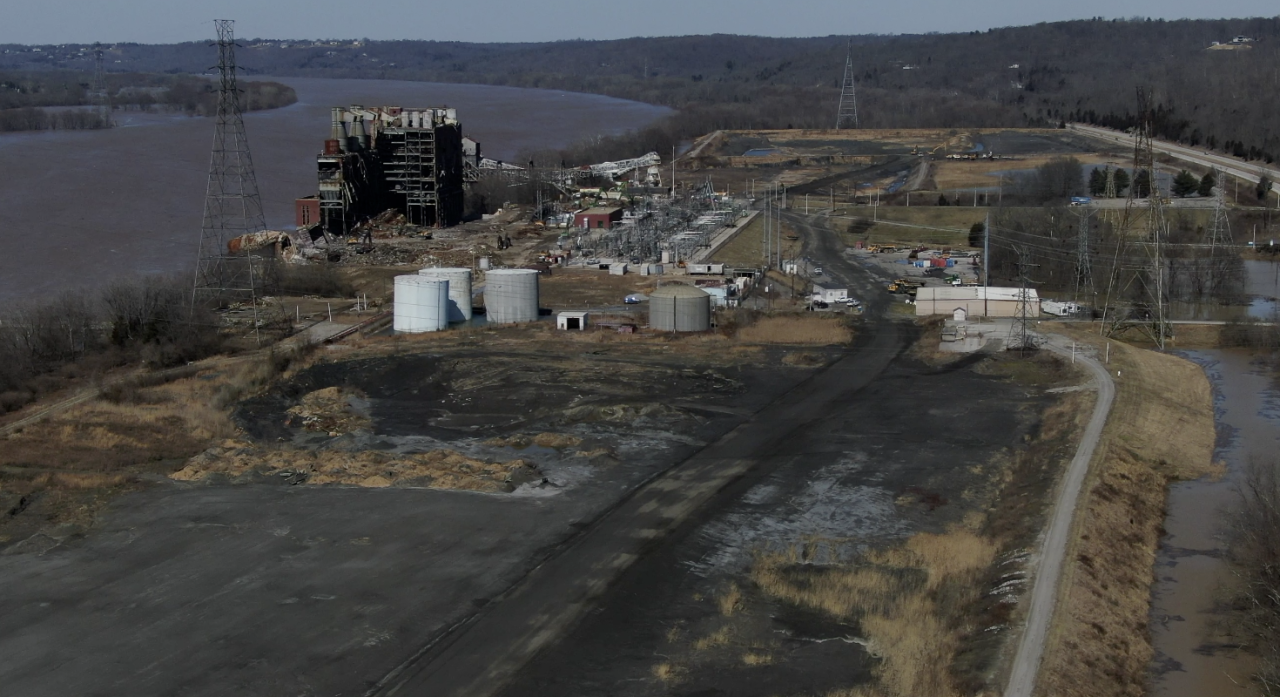
Altman said it could take years for the EPA to create and enforce new rules for Beckjord. He hopes the smoke stack falling into the river is a wake-up call to the public about the lack of regulation at the former coal plant.
"This is the exclamation point at the end of the sentence," Altman said. "Because if you can do something this visible and this obvious and have it this clear to the media and to the public ... that this place isn’t regulated. You can’t escape from the fact that it isn’t regulated."
In the meantime, New Richmond residents like Everhard worry about the impact the Beckjord site could have on their historic village just as it experiences a revitalization with the opening of new restaurants and businesses.
“I don’t know who to ask. I don’t know what to do. I need someone like you and my elected officials to be on top of this,” Everhard told WCPO. “Protecting the citizens of New Richmond and the neighboring communities.”
WCPO sent emails to all three Clermont County commissioners and one Pierce Township trustee about this story. No one responded.





